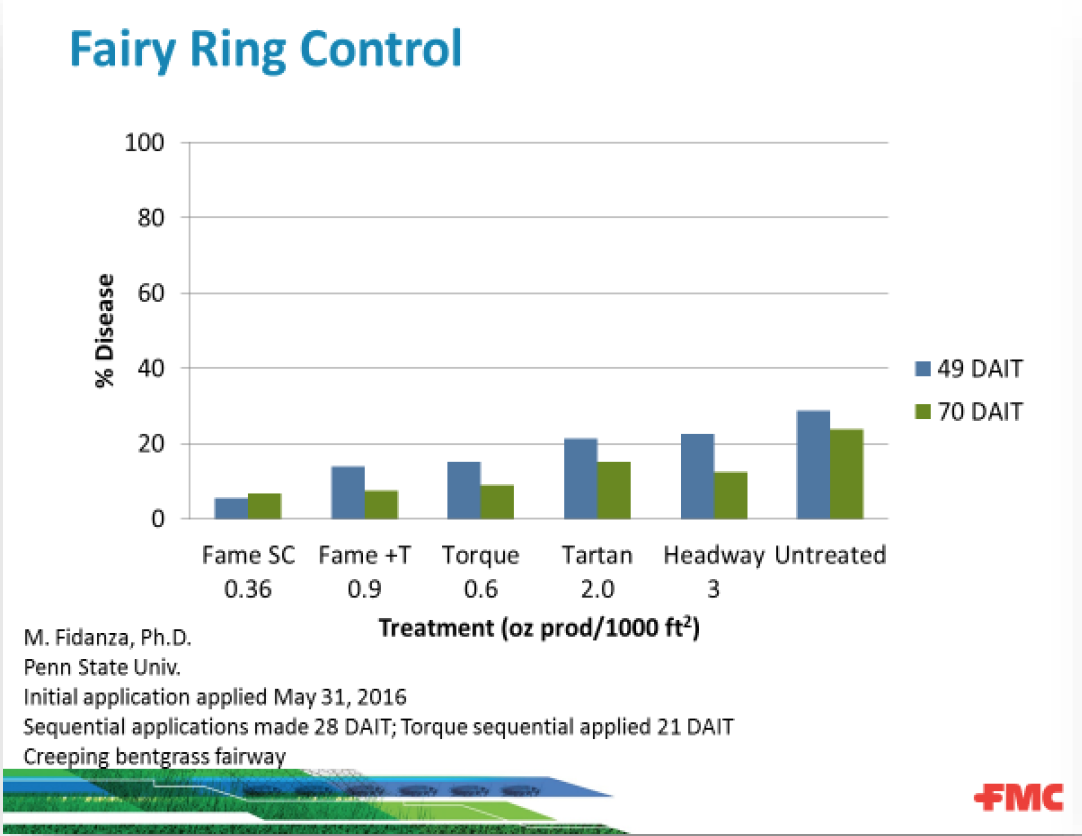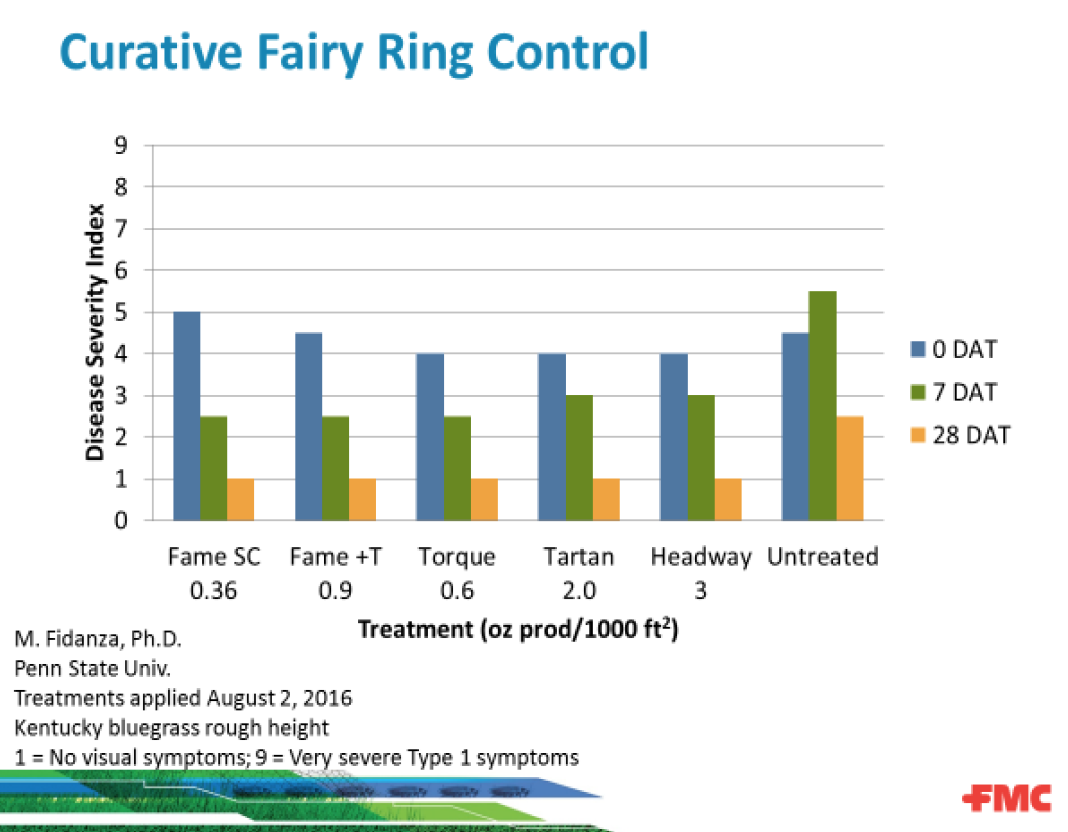By: Ken Hutto, PhD, Product Development Manager, FMC
About Fairy Ring
Fairy ring is a disease that can infest both cool and warm-season turfgrass. Fairy ring is caused by a group of fungi classified as Basidiomycetes. These are soil-borne fungi that colonize soil particles in the root zone as well as thatch layer. There are more than 50 species of fairy ring capable of infesting areas such as sand-based golf course putting greens or tees and native soil areas. It is also commonly found on athletic fields, in lawns and parks.
Symptoms & Identification
This disease is most recognized for the mushroom rings produced (Type III). Type III typically develops when dry conditions are followed by heavy rainfall. Type II causes a stimulation in turfgrass growth producing a dark green ring of turfgrass. This is due to microbial breakdown of ammonia produced as the fungi decompose organic matter. With Type I fairy ring mycelium coat soil particles thus resulting in hydrophobic conditions. The infected areas are not able to absorb water through the roots, which causes a necrotic (brown) arc or ring leading to dead turfgrass.
Fairy Ring Management
Cultural: Fairy ring can be difficult to control as there are some species that produce mycelium 2 to 3 ft deep into the soil profile. Reducing turfgrass stress by applying correct rates of fertilizer and using adequate irrigation will strengthen turfgrass competition. In infested areas core aerification and localized irrigation can help reduce localized dry areas associated with fairy ring symptomology.
Chemical: Fungicides can be used for preventative fairy ring management. In general, preventative applications should begin once soil temperatures at 2 inches reach 55 F. Depending upon the season, it may require two to three applications for season-long management. FMC Professional Solutions offers a few Fame fungicide options to protect your property from fairy ring. In cool-season turfgrass, apply 0.9 fl oz/1000 ft2 Fame +T as a first application in spring followed by 0.36 fl oz/1000 ft2 Fame SC 28 days later. In warm-season turfgrass, two applications of 0.36 fl oz/1000 ft2 Fame SC 28 days apart can be a foundational part of your fairy ring program. Fame SC applied at 0.36 fl oz/1000 ft2 has also demonstrated effective curative fairy ring control. It is common to apply a wetting agent with fungicides targeting fairy ring to aid in moving the active ingredient down into the soil profile where the pathogen is active. Additionally, it is important to use a high spray volume (4 gal/1000 ft2) to move fungicide through thatch layer.


References
Kennelly, M. Fairy rings in Turfgrass. EP-155. Kansas State Univ. Agricultural Experiment State and Cooperative Extension Service.
Miller, G.L., L. F. Grand, and L. P. Tredway. 2011. Identification and distribution of fungi associated with fairy rings on golf putting greens. Plant Disease. 95 (9) 1131-1138.
Latin, R. 2011. A Practical Guide to Turfgrass Fungicides. The American Phytopathological Society. St. Paul, MN. pp. 193-195.
Top photo courtesy of S. Dickson
Always read and follow label directions. Fame is a trademark of FMC. FMC and FMC logo are registered trademarks of FMC Corporation. ©2018 FMC Corporation. All rights reserved.

